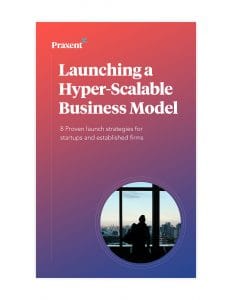
6 min read
What a Sandwich Can Teach Us About Value Propositions
What a Sandwich Can Teach Us About Value Propositions
This is Part 2 in our Reverse Engineer Your Business Series (view Part 1 & Part 3).
What promises do you make to your customers? And does your business model allow you to fulfill those promises? A visit to Panera Bread the other day prompted me to consider those questions from a value proposition standpoint. What they promised – both verbally and non-verbally – was what they delivered. It’s a simple idea that, when reverse engineered, might transform your own company’s business success.
Sit back and take a moment to think about the promises your company makes to its customers. Are they specific and realistic? Who in your organization is making promises? Who is in charge of delivering on the promises? How have you enabled them to work together to reliably follow through, whether by instilling processes, investing in technology or utilizing other resources?
These questions dominated my thoughts as I ate a salad the other day at Panera Bread. As a glanced at the receipt, I realized it was really an artifact that communicated Panera Bread’s promise to me, the customer. The recipient contained the ‘promise parameters’ that ensured my trust would be maintained.
Scalability and Promise
In order to explain this, let’s jump to the bigger picture first. You see, in order to responsibly make promises, an organization has to be able to quantify its capacity to fulfill its promises and size the promises it’s making to customers. Being able to accurately compare the two is essential to succeeding. Scalability is one of the first hurdles to achieving this. Businesses often start out with processes that simply can’t be scaled: The owner is too involved in the day-to-day activities, for instance; or every client is billed differently.
Now, back to the receipt. What we can learn from Panera Bread—and the receipt that lay in front of me—is that process makes perfect. While it doesn’t overtly appear so, the menu items at Panera Bread are packaged—meaning, there’s little to no opportunity for custom orders. Sure, a client will request things like “no onions” from time to time but, otherwise, every soup, every sandwich, every cup of coffee is presented in the same way with the same ingredients with no deviation.
Additionally, each team member is assigned a repeatable task. In my case (as my receipt indicates), Cashier Michael greets me, takes my order, and creates a kitchen bump ticket in the MIS system that tells the kitchen staff (who works behind the scenes) exactly what I want. Michael is great at his job because he is hired to specifically fill that role. He’s outgoing, considerate, and can work a register. He handles only POS (point of sale) and does it repeatedly, so his performance becomes consistent.
This reliability supports the restaurant chain’s promise that the food and service will be predictably high quality. From a Business Model Canvas standpoint, key resources (staff fulfilling specific roles) and key activities (repeatable tasks) come together to deliver on the value proposition (the promise).
Know What Your Customers Want
Now, this isn’t the only way to scale a business. Take Subway, for example. Subway is very successful serving customers in a manner the British call ‘bespoke’: taking custom orders. Subway promises sandwiches made exactly how each customer wants them. With this value proposition, each staff member is trained to serve individual customers one-on-one from order to payment. The outcome is unpredictable: sometimes the service isn’t consistently good; and sometimes the sandwich tastes horrible because the customer chose an odd combination of ingredients. Therefore, Subway’s value props are not Panera Bread’s value props. They can’t claim to deliver on the same promises because they aren’t equipped to follow through in the same way. So they focus on other promises, geared toward the desires of their own customer segments.
The key here is to not promise the world. Consider the customer fulfillment lifecycle in order to craft very specific promises that you can deliver on time and time again. Size your promises accordingly, set expectations, and protect constrained resources.
Understand, too, that when verifying whether or not your organization is delivering on promises, the difference between promise and fulfillment isn’t always as tangible as profit. It can present itself in the form of reputation, reviews, customer loyalty, employee morale and a number of other manifestations.
Now You Take a Look
When you start to understand your own value propositions better, you can start using those same promises to innovate. Take a look at the area between when a promise is made (usually the revenue generator) and how it is kept (usually where the operating costs appear). Are you leveraging technology to deliver on promises efficiently? Can you beat the competition through innovation at this point in order to make an even bigger promise or to deliver that promise more cost effectively? The answer in most cases is: yes.
For Panera Bread and many other high growth organizations, that area is in management information systems and software, the systems that capture, track and operationalize data.
So, my challenge to you this week is to take a look at the receipts (or artifacts) you receive. What clues do they give you about the promises that are being made and how the promises are being fulfilled? And how can you apply these lessons to your own organization?
Bon appétit!
Watch the Webinar: Disruptive Digital Products that Enable Hyper-Scalability
Find out if your product idea is worth more than you realize.
See how we use the business model canvas to drive objectives for our software projects.



Leave a Reply